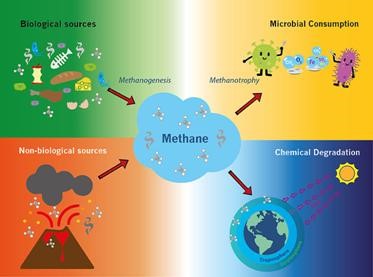Description

Disclaimer: Copyright infringement not intended.
Context: According to the International Energy Agency’s (IEA) annual Methane Global Tracker report, fossil fuel companies emitted 120 million metric tonnes of methane into the atmosphere in 2022, only slightly below the record highs seen in 2019.
Details:
- The report has come just weeks after energy giants such as Shell, BP, ExxonMobil and others reported record profits last year as the Russia-Ukraine war drove up oil and natural gas prices
Findings:
- These companies have done almost nothing to curb the emissions despite their pledges to find and fix leaking infrastructure.
- The report said 75 per cent of methane emissions from the energy sector can be reduced with the help of cheap and readily available technology.
- The implementation of such measures would cost less than three per cent of the net income received by the oil and gas industry in 2022, but fossil fuel companies failed to take any substantial action regarding the issue.
- The energy sector accounts for around 40 per cent of the total average methane emissions from human activity, as oil and natural gas companies are known to release methane into the atmosphere when natural gas is flared or vented.
- The greenhouse gas is also released through leaks from valves and other equipment during the drilling, extraction and transportation process.
- More than 260 billion cubic metres (bcm) of natural gas (mostly composed of methane) is wasted through flaring and methane leaks globally today.
- It further mentioned that 80 per cent of the available options to curb the release of methane could be implemented by the fossil fuel industry at net zero cost.
.jpeg)
How are methane emissions driving climate change?
- Methane is a greenhouse gas, which is responsible for 30 per cent of the warming since preindustrial times, second only to carbon dioxide.
- A report by the United Nations Environment Programme observed that over a 20-year period, methane is 80 times more potent at warming than carbon dioxide.
- Last year, the US National Oceanic and Atmospheric Administration (NOAA) said that the atmospheric levels of methane jumped 17 parts per billion in 2021, beating the previous record set in 2020.
- While carbon dioxide remains in the atmosphere for much longer than methane, methane is roughly 25 times more powerful at trapping heat in the atmosphere, and has an important short-term influence on the rate of climate change.
Global Methane Pledge:
- The Global Methane Pledge, launched in 2021, aims to keep alive the 1.5 degrees Celsius goal.
- Over a 100 countries have committed to reducing global methane emissions by at least 30 per cent by 2030 from 2020 levels. This reduction could eliminate over 0.2˚C warming by 2050, the Pledge read.
- India, which is not a part of the Global Methane Pledge, is among the top five methane emitters globally. Most emissions can be traced back to agriculture.
- Methane and short-lived climate pollutants like hydrofluorocarbons stay in the Earth’s atmosphere for a few years, unlike carbon dioxide.
Why is methane potent as a greenhouse gas?
- Methane accounts for about a fifth of global greenhouse gas (GHG) emissions and is about 25 times as potent as carbon dioxide in trapping heat in the atmosphere.
- In the last two centuries, methane concentrations in the atmosphere have more than doubled, mainly due to human-related activities.
- Methane is short-lived, compared with carbon dioxide.
- Methane is emitted from a variety of anthropogenic (human-influenced) and natural sources.
- The human sources include landfills, oil and natural gas systems, agricultural activities as well as livestock rearing, coal mining, stationary and mobile combustion, wastewater treatment, and certain industrial processes.
- Sources of methane can be harnessed for energy and in principle reduce dependence on energy sources that emit high carbon dioxide.

Why hasn’t India signed the pledge?
- India is the third largest emitter of methane, primarily because of the size of its rural economy and by virtue of having the largest cattle population.
- India has stated earlier that it plans to deploy technology and capture methane that can be used as a source of energy.
- India’s approximately 20% anthropogenic methane emissions come from agriculture (manure management), coal mines, municipal solid waste, and natural gas and oil systems.
- To tap into this “potential,” the Ministry of New and Renewable Energy (MNRE) claims to have invested heavily in a national strategy to increase biogas production and reduce methane emissions.
- The biogas strategy includes many policy initiatives, capacity-building, and public-private partnerships.

|
PRACTICE QUESTION
Q) Why is methane potent as a greenhouse gas? Why hasn’t India signed the global methane pledge? (250 words)
|

https://indianexpress.com/article/explained/explained-climate/fossil-fuels-companies-failed-methane-emission-iea-8471708/




![]()
![]()






